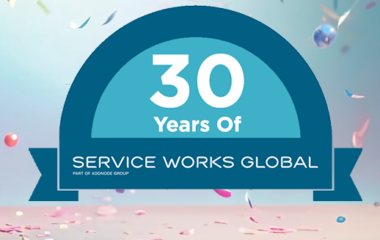Samantha Fuller, International General Manager, Service Works Global, discusses with FM Magazine how technology can help with a seamless transition to hybrid work. Read the full article here.
A recent report from the Property Council of Australia shows that while employees are going back to the office, that number varies by region. Of the major metropolitan areas, Melbourne has the lowest office occupancy rate of 46 percent, while Peth CBD is much higher at 81 percent.
It’s difficult to generalise working patterns across all states of Australia (and, if the last three years have taught us anything, it’s foolish to make definite predictions about their future). Businesses are still figuring out their workplace strategies, as well as the ongoing risk assessments associated with the pandemic, but one thing is clear – flexible work is here to stay for a lot of people.
This brings about a new set of challenges from the pre-pandemic workplace, and FM teams are right at the forefront. Previously, the majority of offices would be occupied during normal working hours, five days a week. That’s not the case anymore, which leads to opportunities for energy saving, strategic maintenance work and cost savings.
Smart Buildings and Integrated Tech
Arguably the biggest challenge – or opportunity – is to adopt software and technology that can transform a workplace into a smart building. The key here is to ensure that technologies, such as Building Management Systems (BMS) and sensors are integrated with existing Computerised Maintenance Management System (CMMS) to provide a holistic, efficient solution.
Previously, the majority of offices would be occupied during normal working hours, five days a week. That’s not the case anymore.
The Internet of Things (IoT) is how various smart devices communicate with each other and self-operate for maximum effectiveness. In best case examples, smart buildings can include BMS, remote management of all user and conferencing technology, asset management with remote diagnostics, building security, desk booking and real-time occupancy data. These are all fundamental data sets for FMs to have in order to adapt to the flexible workspace.
With such a vast array of data potentially available, it can be tempting to jump in and install new tech across a whole estate. But it’s best to take things one step at a time.
Careful consideration is required to decide what needs to be achieved and how it will be measured. For example, is it to reduce utility costs? Improve service efficiency? Help with wayfinding across large organisations? Increase employee retention? Always start with a goal in mind.
Then you need to determine who will be responsible for rolling out the technology and analysing the data. Roles must be decided in advance to avoid the data simply falling into a black hole.
In addition to measuring office occupancy, sensors integrated with CMMS can proactively support a comfortable working environment in the flexible workplace.
It’s also important to make sure that the right data is being captured before rolling out a new technology across an entire estate. It may often be more practical to start by implementing in one building, or across one floor. Not only will this give FM teams a chance to familiarise themselves with the technology, but they can also make sure that it integrates with existing systems. You may think you have found the perfect piece of software, but if it doesn’t talk to other systems, it can be much more time-consuming to collect and amalgamate the data.
BMS Integration
BMS can diagnose maintenance and service requirements, as well as anticipate the condition of a piece of equipment or components based on its use and age. They can also predict impending equipment failure by monitoring asset data.
When integrated with CMMS, maintenance jobs can be automatically raised and a notification sent to an operative, whether they are a contractor or in-house. This means that preventative maintenance is only performed when necessary, which can lead to big cost savings.
Savings can also be made in the long run. Through proactive repair flagged by BMS, asset life can be greatly extended. In addition to the cost savings, this is also good practice from a sustainability perspective.
Sensor Integration
In a bid to collect and analyse data to help make more informed decisions, sensors are also being more widely adopted. Sensors can be used for a range of purposes, from measuring office occupancy to managing smaller – but still important – service standards like tracking when soap dispensers need replenishing.
For soap replenishment, when sensors are integrated with CMMS software, a job is automatically raised when levels run low and a notification sent to an operative. As well as flagging the job, the data is stored and can be analysed to identify patterns for stock purchase. This can help streamline budgets, predict expenditure and free up storage space.
In addition to measuring office occupancy, sensors integrated with CMMS can proactively support a comfortable working environment in the flexible workplace. When linked to room-booking software, an IoT system can turn on lights and heating in a room when it’s in use. Considering the lower levels of office occupancy that we are currently experiencing, this is a great way to vastly improve sustainability and utility bills by only providing energy to occupied rooms.
Strategic Facility Management
Strategic facility management is critical to properly supporting businesses, employees and customers in our new reality of hybrid work. Technology can help make this transition seamless and safeguard facilities long term by bringing increased compliance, enhanced sustainability, reduced running costs and happier employees.








